Well good morning, and welcome to April.
How much do you know about acrylic yarn? Personally, I know lots about wool, alpaca, cotton, and even qiviut, but other than a vague awareness that acrylic fibre has some connection to plastic, I’m a bit clueless… or at least, I was.
So for this blog post – and I warn you, it’s a long’un – I set out to learn more about the production of acrylic, to interview those involved, and to photograph the experience along the way. Want to come along for the ride? Let’s start from basics. You probably already know that acrylic fibre comes from the fleece of an animal called the acryla. But I bet you’ve never seen any acrylas. (There’s a reason for that, that I’ll explain in a bit.)

These odd creatures originated around American tar pits, where they evolved the ability to digest the bitumen-contaminated plants and creatures living there. Yuck! Wild acrylas have matted, sludge-coloured, fur, and their meat is said to taste about as revolting as you’d expect, so for a long time nobody took very much notice of their existence.
Fast forward to the invention of plastic in the early twentieth century which, as we all know, is derived from crude oil, so is not completely unrelated to acrylas’ natural diet. Some bright spark worked out that if you feed acrylas on a diet of pure plastic, their fleece grows soft and sleek and perfect for knitting. And it takes on the colours of that plastic, because the animal’s digestive system can’t break down the dye pigments. Thus, acrylic yarn was invented, and textile production changed forever.
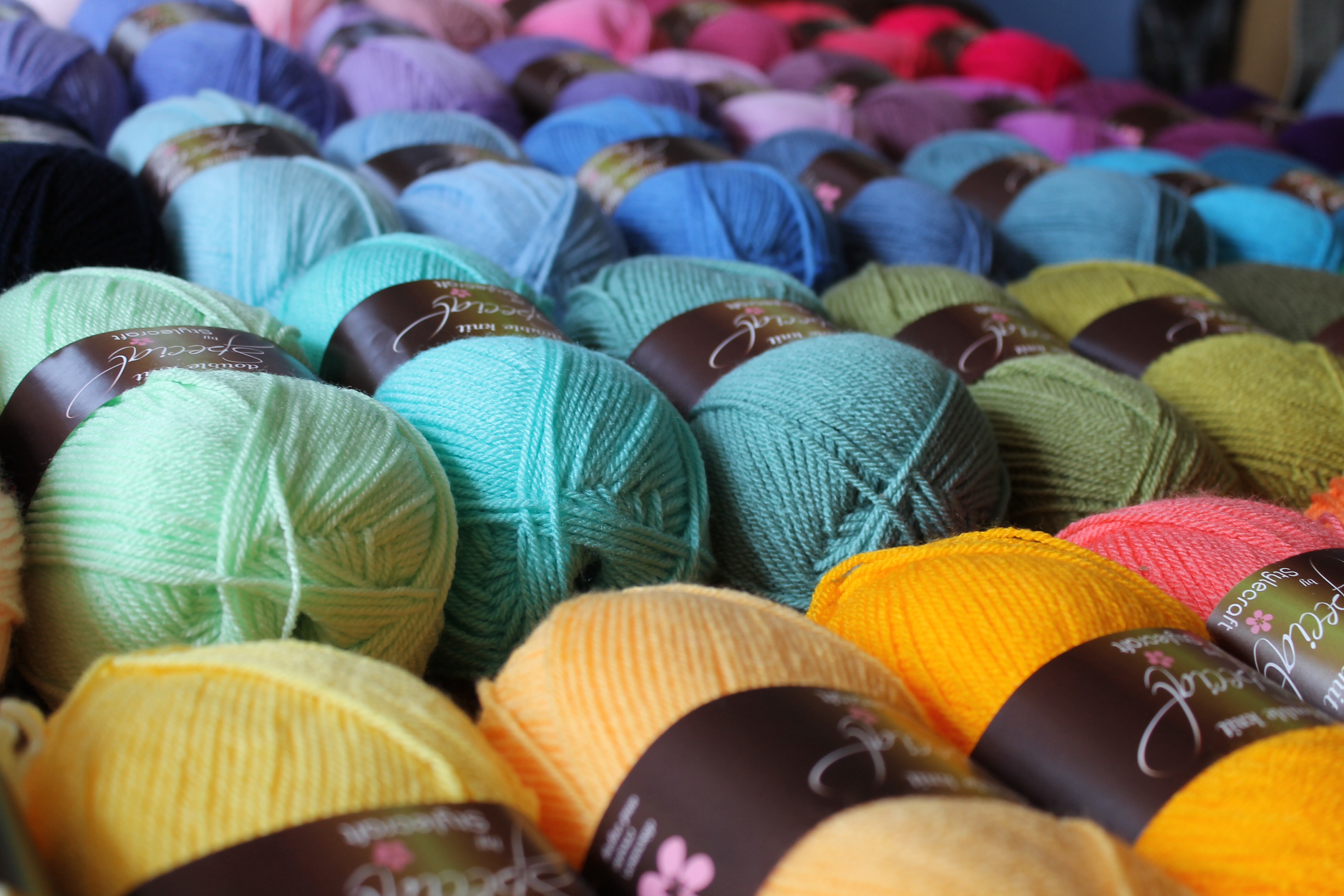
Acryla farming remains a niche activity. I’m on chatting-in-the-pub terms with one of the farmers in our village, and when I asked her about raising acrylas, she laughed at me (even though she’s notorious for the fact that her cattle once escaped their field and chased two police officers down the High Street, but far be it from me to remind her of that).
“What’s wrong with acrylas?” I asked. She looked at me with the kind of expression you’d use on a three-year-old who wants to drive Mummy’s car. Then she explained, “I bet you think they’re all pink and cutesy like the photos on the internet, but they’ll only produce fleece like that if you micro-manage every flippin’ mouthful that they eat.”
“Oh.”
I had to buy her a drink before she’d tell me any more.
“You can’t just keep a few acrylas in your paddock for a hobby. For one thing, they only thrive in big herds – a hundred-head, minimum – and you’ll need serious security to stop them chewing their way to freedom. They’re related to pigs, remember, so they’re clever. And you don’t want them near public footpaths where people can toss random bits of plastic into their field.”
“Oh.”
I really did want to meet an acryla farmer though, and I eventually tracked down Dougal McPhee, who has a herd of 250. Dougal and I chatted by email. Until four years ago, he was an investment banker, working crazy hours in the City and driving a Lamborghini. But he wasn’t happy, and when a colleague turned up to work one Christmas Eve wearing a novelty festive jumper knitted in acrylic by his mum, a plan started forming in Dougal’s mind. Six months later, he left the bank.
These days, he lives on his 60-hectare farm in south Oxfordshire, and he long ago swapped his Lambo for a battered old Landie. He agrees to show me around early one morning. At last! I’m going to see some real acrylas!
He’s waiting for me at the gate of Bankside Farm when I arrive. And truth be told, he’s not quite what I’d imagined from his emails. Yeah he’s a tall man, and affable, but a harsh critic might say that he seems much older than his 26 years. He looks tired, and it turns out that he’s been up half the night, helping a young sow who’s struggling to suckle all ten of her newborns. “Ten?” I gasp. (Like their porcine relatives, acrylas have big litters.)
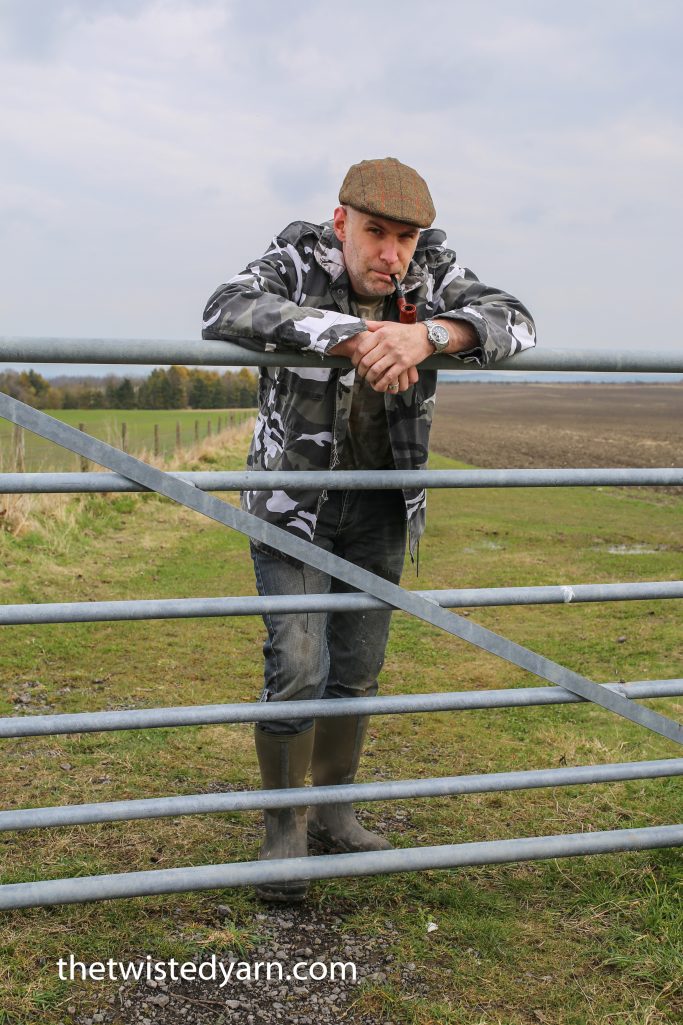
My first impression of the farm is that it’s pretty. There’s the old stone farmhouse with its sagging roofline, set neatly into the curve of a hill. There’s a view across the rolling Oxfordshire countryside. A border collie is barking homicidal intentions at me from inside the house. I can’t see any acrylas, though.
He picks up a bucket of Lego pieces (a 90% blue-10% yellow blend) and then we’re off along a muddy track.
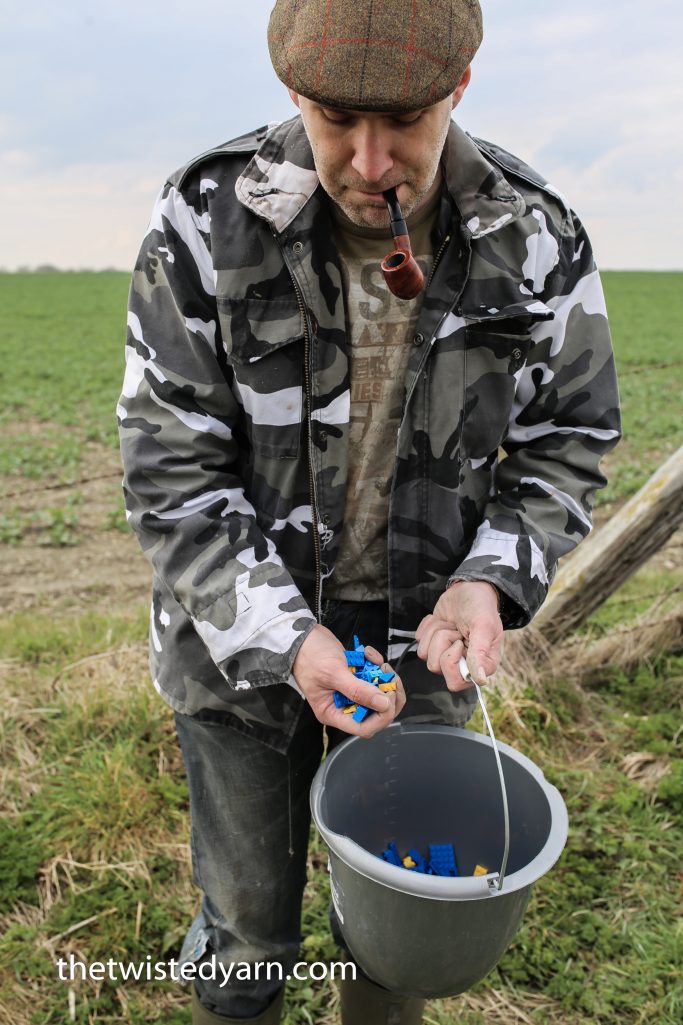
It’s peaceful here as the noise of the border collie’s death threats fades, but what is that awful smell? I ask Dougal about it, and he barely has time to give me a condescending look before I realize that of course, that must be the smell of the acrylas. “Where do you think we get the word ‘acrid’ from?” he reminds me. I guess that’s one of the reasons why acryla farms tend to be in the middle of nowhere. No wonder that most of us never get to see (or smell) these places.
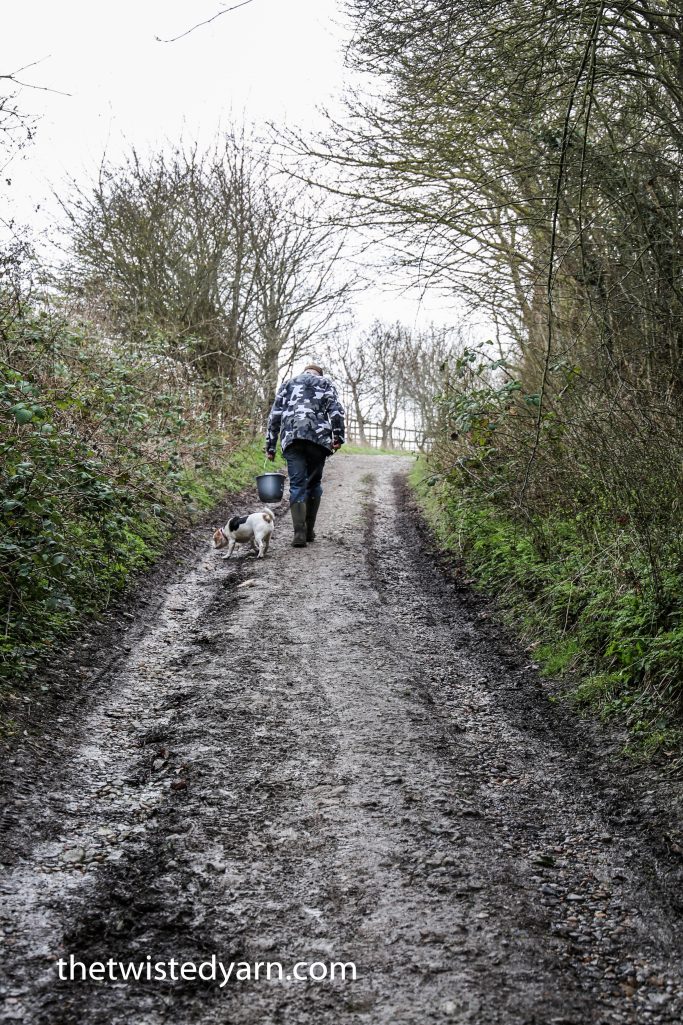
We reach the top of a hill, and at last I see them. Dozens and dozens – nay, hundreds – of animals scattered across several fields. There are pink acrylas, green acrylas, spotty acrylas, and acrylas with zebra-stripes in yellow and purple. Groups of brightly-coloured young cluster around their mothers, whilst old boars with fading pastel-coloured fur move slowly at the field’s edge. I can say with complete and utter honesty that I’ve never seen anything like it. Most of them are standing still, but when they move, they’re surprisingly speedy for such short-legged animals… especially when they see Dougal approaching with a bucket.
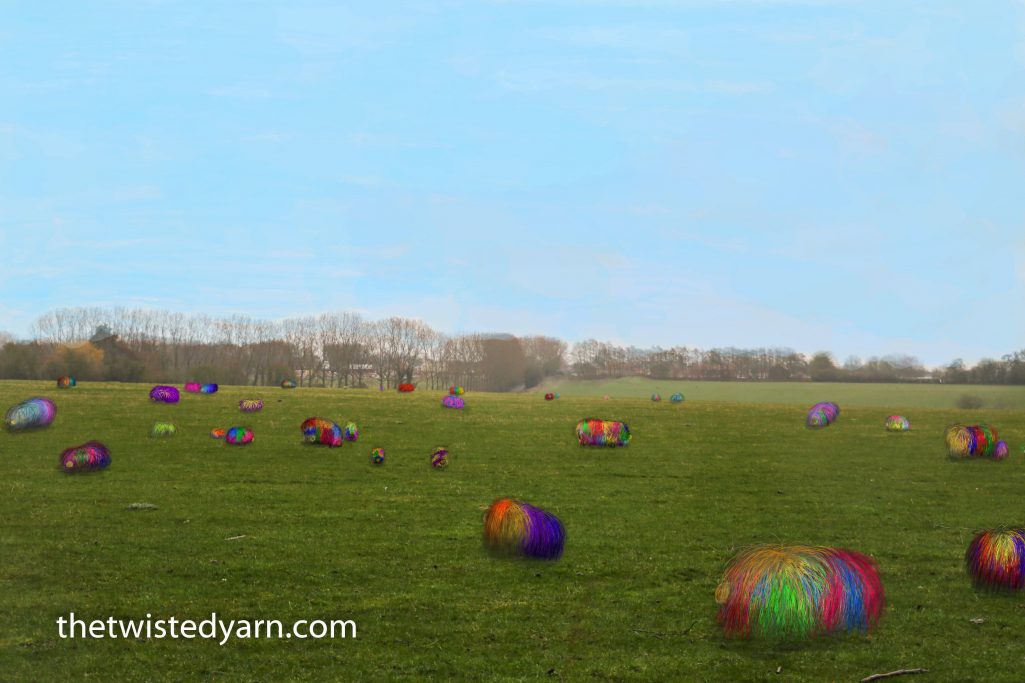
There’s a long trough beside the nearest fence, containing empty water bottles. Some of the acrylas are there eating already, making odd crunching-crackling sounds as they chew. Dougal sprinkles blue-yellow Lego in amongst the bottles, and suddenly there’s a bit of a scrum going on at the trough.
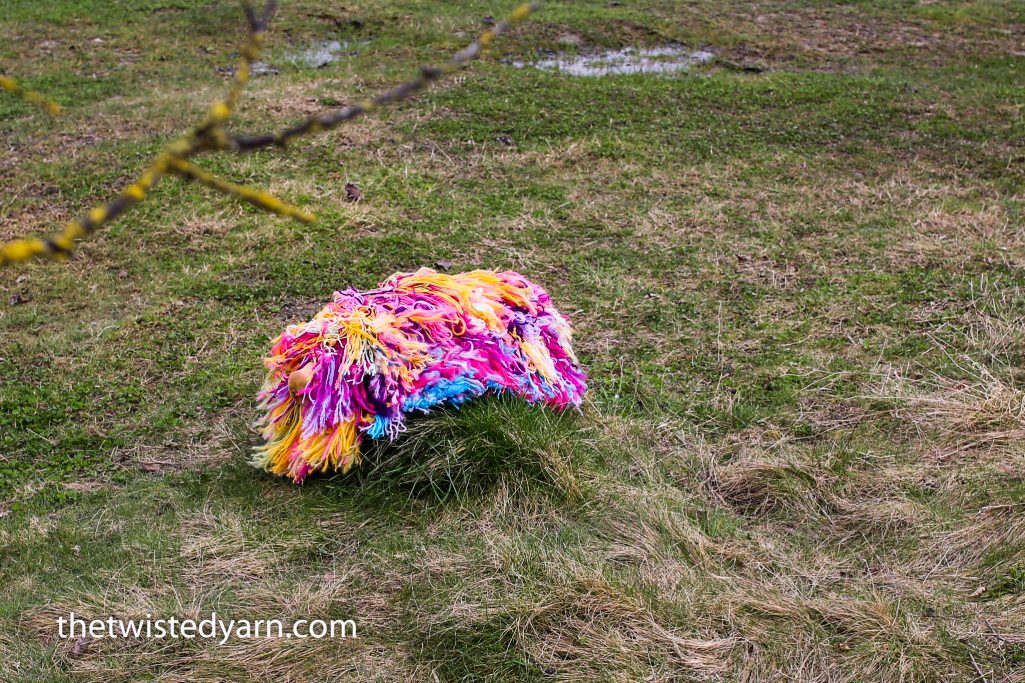
“Lego is the perfect dietary supplement,” he explains. “The animals love it, and it helps me to control the exact shades of their fleece.” He pulls out a yarn shade card from his jacket and stares from it, to his animals, frowning. Then he nods, and pours just a little more Lego into the trough. The noise as the snuffling beasts crunch through hard plastic is almost overwhelming.
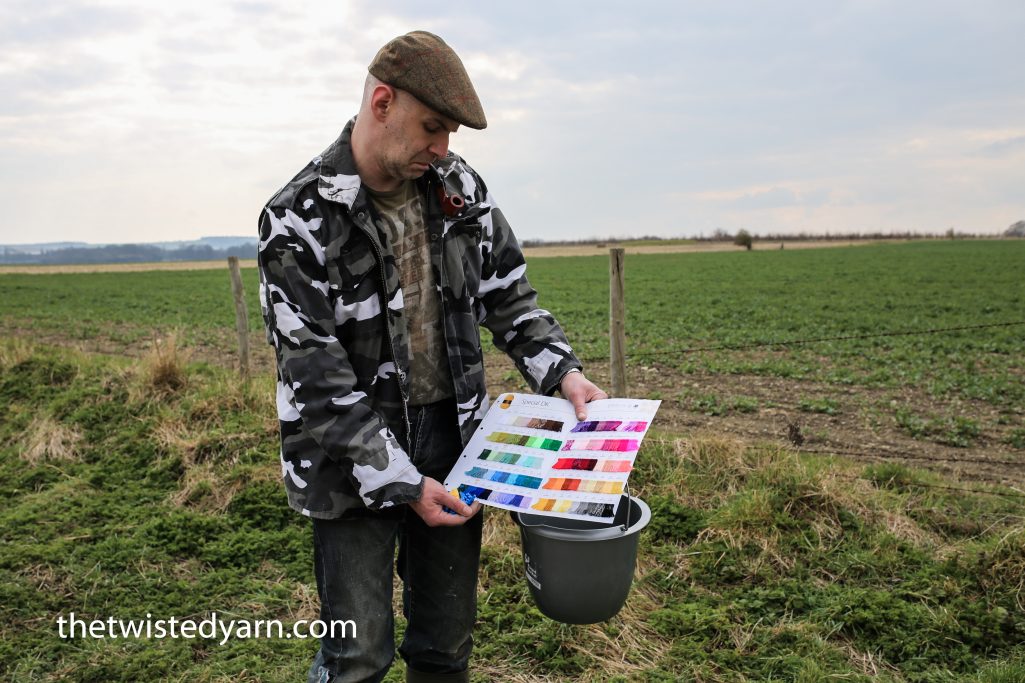
“So would you ever go back to investment banking?” I ask him, and I’m surprised when he hesitates before responding. “Um, no,” he says at last. “No, I don’t think I would. But it’s not easy, acryla-farming, and don’t let anyone tell you otherwise. These animals look cute, but rearing them is a hard, hard, life. Want to meet them close up?”
“Er, OK,” I say. He swings himself over the fence and into the field. By the time I’ve followed suit, we are surrounded by a seething mass of squabbling knittables. They aren’t exactly unfriendly, these creatures, but I have the impression that they just want plastic and they’ll stop at nothing in their quest to get it. Apologies for the lack of photos from inside the field but my camera has plastic parts so I have to leave it outside the field.
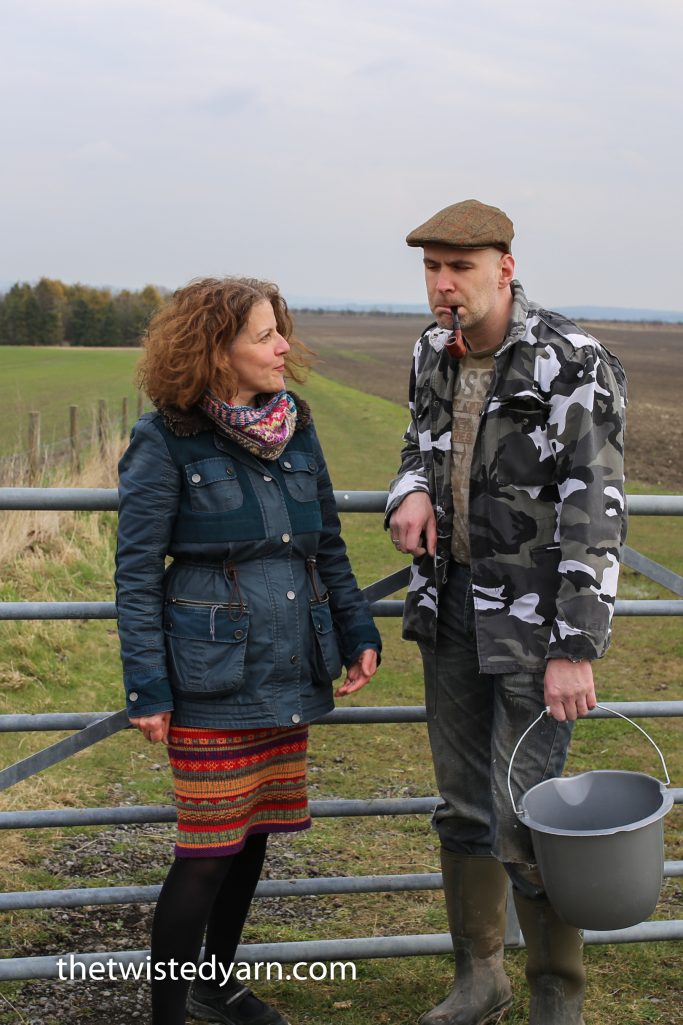
Dougal is patting and gently scolding his animals, unworried by the fact that about fifty of them seem to be trying to climb him. “Want to hold one?” he asks, and picks up the most multicoloured beast of the lot. I nod, and we make our way slowly back to the edge of the field and over the fence. Then Dougal passes me Maisie, who will not keep still. This is the only passable photograph we manage to get of me holding her:-
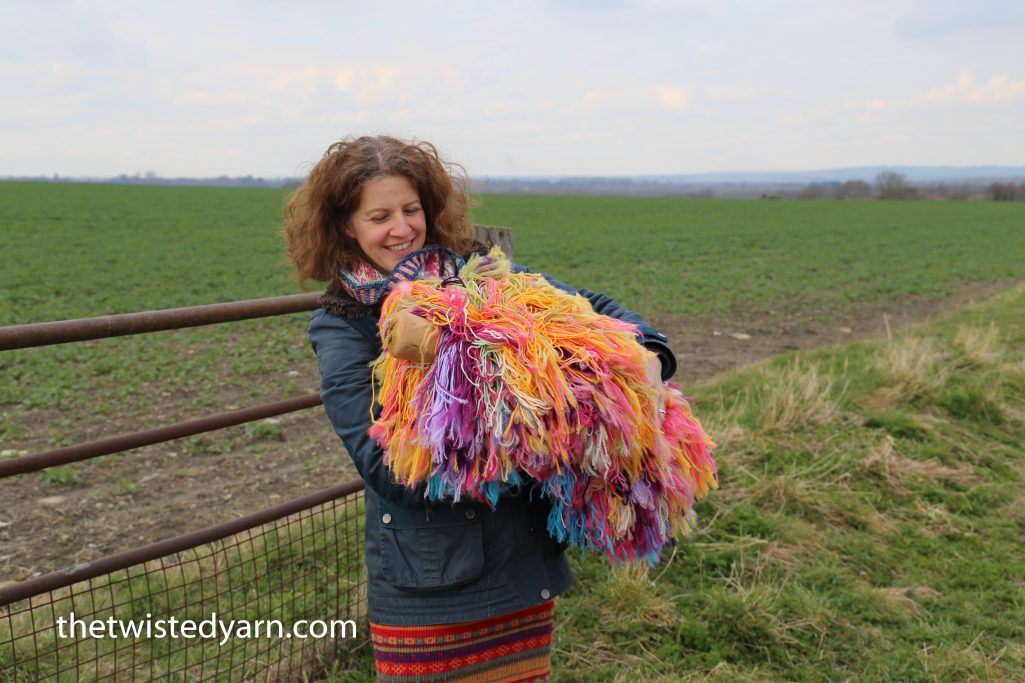
After leaving the farm, I’m still wondering about how the acrylas’ fleece is turned into yarn. So I phone my contacts at Stylecraft (who happen to be the major buyer of Dougal’s fibre). Annabelle Hill (Sales and Marketing Director) agrees to answer my questions. I head up to Yorkshire on the train, and we have a chat over tea in the Stylecraft boardroom.
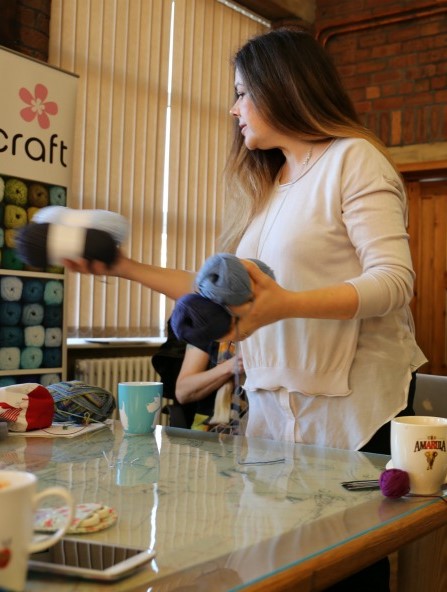
“We’re very fussy about the quality of our acryla fibre,” she says. “I do feel for farmers such as Dougal because he’s in a very tough business, but we have to be hard-nosed because we can’t risk letting our standards drop.” Her assistant wanders past, crocheting a sock whilst humming the William Tell Overture. “We work with farmers like Dougal because we know his animals only have access to quality plastics, with regular Lego supplements.”

Annabelle offers to show me around the floor of the mill where they process the acryla fibre. This was the one area I didn’t get to see on previous mill tours (such as here). “The best acryla fibre needs very little processing,” Annabelle explains.
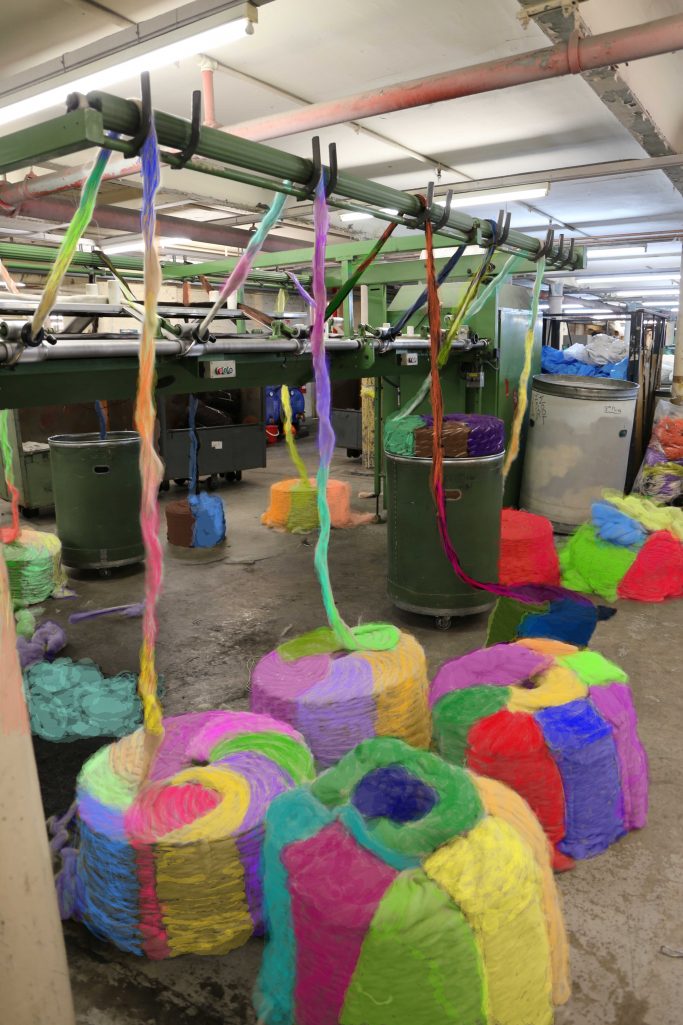
The process does indeed seem very minimal, because the raw product arriving at the mill almost looks ready to be wound into a ball and cast on. Vast machines the width of the building rumble and rattle as they devour pinks, and yellows, and greens, and blues. It’s slightly mesmerising to watch.
Annabelle has to shout to be heard above the roar. “All this?” she says. “Last month, it was acryla fleece; by next month, it could be blankets, cardigans, stuffed animals, and scarves. Isn’t it wonderful to be a part of that process?”
And I have to agree that yes, it really, really, is.
With heartfelt thanks to Jo Ray, “”Dougal McPhee””, Annabelle Hill, Sophie Cromwell, Juliet Bernard, and everyone at Stylecraft for their enthusiastic and generous assistance with this post.
Thank you for a wonderfully informative piece. I’ve been lucky enough to see some acrylas on a farm but thought they were related to guinea pigs until the farmer put me right. We need more experts like yourself spreading the word about these much underrated farm animals.
You’re welcome. It always amazes me how few people know where acrylic yarn comes from.
This is by far the best thing I’ve read in a while. Very well done!
Thank you – that’s high praise indeed!
Loved reading about acrylas. Made my day!
Thanks Mary! Glad to have been of service! 🙂
I am wondering…were you listening in on the lectures when your father-in-law attended comedy school? How you make people smile and laugh is always entertaining (and so is your knitting).
Tee hee – thanks for the thought, but no! I certainly can’t come up with the one-liners that are his specialty. I would like to borrow some of his how-to-write-comedy books, though.
This is what my grandfather would have called a “whopper.” Loved it though. ????
Thanks!
Just come across this wonderful April foolery – brilliant! Would the acrylas be related to Farmer McKranky’s world famous herd of rare tartan sheep, by any chance? 😉
What a fantastically fun read! I shared it with my 6th graders…..many thought (for a few minutes anyway) that these amusing little critters really did exist-LOL Thank you.
Ha, I’m glad I fooled somebody! (And thank you for your comment.) As a non-US person, how old are 6th graders?
I love your piece on Acryla’s. Very informative and quite hilarious!
Hilarious? But it’s a terribly serious piece of journalism! 😉
Thank you… a well needed chuckle!!
Tell me is the the acryla related in anyway to the rather hairless haggis, which I understand has similar habits?